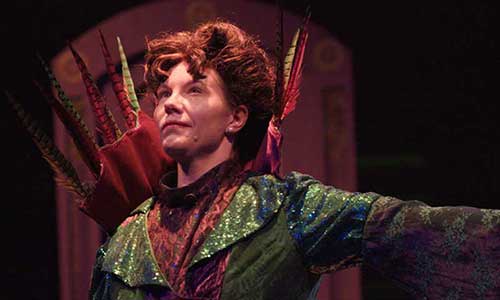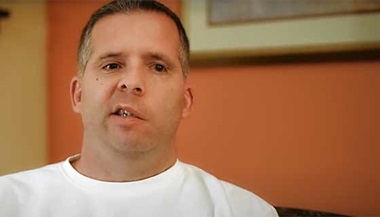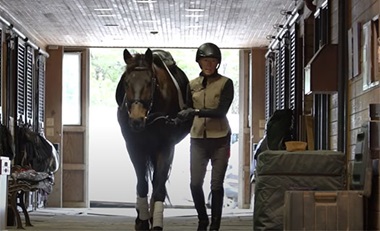Facial Paralysis
An inability to move the muscles of the face on one or both sides is known as facial paralysis. Facial paralysis can result from nerve damage due to congenital (present at birth) conditions, trauma or disease, such as stroke, brain tumor or Bell’s palsy.
The problem can affect one or both sides of the face, with noticeable drooping of the features and problems with speaking, blinking, swallowing saliva, eating or communicating through natural facial expressions.
Treatment for Facial Paralysis
Paralysis of the face may be temporary or permanent. The facial plastic surgery team determines the best treatment based on how long the paralysis has been present, the cause and whether it is a complete paralysis, or an incomplete (or partial) paralysis.
Facial Paralysis Surgery
Facial paralysis surgery is also called facial reanimation surgery. A facial plastic surgeon can use all or parts of muscles, nerves or both from other parts of the body to restore motion to the lower half of the face.
Because of the importance of facial mobility in creating recognizable facial expressions and communicating with others, addressing paralysis of the face is more than a cosmetic concern, especially in children.
Nerve Transfers
When a facial nerve is injured, there is a period of time during which it may be possible to restore lost nerve function to (reinnervate) the muscles of the face by transferring another nerve to that area.
For example, a branch of the nerve responsible for chewing can be released and attached to one or more branches of the facial nerve. If this is done soon enough after an injury, it is usually successful.
If nerve function is lost, as time goes on the muscles of the face weaken and degrade. When a year or more has passed, the opportunity to reinnervate the facial muscles may be lost. Even if this happens, there are options to restore movement and expression to the face.
Temporalis Tendon Transfer (T3)
The temporalis muscle and tendon are located in the face. The muscle’s purpose is to help with chewing. The plastic surgeon can move these structures to another position, a relatively simple operation that takes less than an hour.
This technique is extremely effective at lifting the sagging or droopy mouth. It can restore symmetry, reduce drooling and even allow a patient to smile again.
One drawback to this procedure is that the person must clench the teeth to smile, which takes practice. With work, over time, most patients can achieve an almost effortless smile. Although there is a theoretical risk of trouble chewing following this surgery, that risk is minimal.
Gracilis Muscle Transplant (Free Flap)
The gracilis muscle is located in the inner thigh. A small portion of this muscle, called a flap, along with its corresponding nerve and blood supply (artery and vein), can replace the facial muscles that allow the person to smile.
Using highly specialized microsurgical techniques, the surgeon transplants the gracilis muscle’s artery and vein and attaches them to a corresponding artery and vein in the head and neck region. This connection is critical for the muscle to survive in its new environment in the face.
There are stronger muscles in the leg that perform the same function as the gracilis muscle, so even after the surgeon removes this muscle to use in the person’s face, the person is not likely to have any long-term problems in moving or walking after the procedure.
Though the gracilis transplant takes longer, involves two surgeries and a two-day hospital stay, it has certain advantages over the T3 procedure. The smile produced by a gracilis transplant does not require teeth clenching and is more natural looking, involving the whole face rather than just the corner of the mouth.
Stroke and Facial Paralysis: Maggie’s Story

Maggie Whittum suffered a life-threatening stroke that left half her face paralyzed, a devastating loss for a talented actress. Today, she's back to performing.
Nerve Options to Power the Gracilis Muscle
Muscles require nerves in order to function, and so muscle transfers such as the gracilis transfer require two separate surgeries.
The first procedure involves moving a nerve to the facial area. Once this surgery heals, the surgeon can perform the second procedure: the transplantation of the gracilis muscle itself.
The surgeon has several different nerve-grafting options for facilitating motion and sensation to the transplanted muscle and empowering it to work in its new location.
Cross-Facial Nerve Graft
Because this nerve graft crosses the face from the normal side to the paralyzed side, it is called a cross-facial nerve graft or CFNG.
First Surgery: The surgeon removes a sensory nerve from the lower leg (the sural nerve) and attaches it to a facial nerve branch on the person’s normal side, tunneling the other end of this nerve underneath the skin to position it in the paralyzed portion of the person’s face. Removal of the nerve may result in some numbness around the little toe and the outer edge of the foot.
There is a six- to nine-month wait after this procedure to allow the nerve signal to grow across the nerve graft, from the patient’s normal side to the paralyzed side.
Second Surgery: The surgeon then connects the cross-facial nerve graft to the nerve that moves the gracilis muscle at the time of the gracilis muscle transfer.
Masseteric Muscle Transfer
The masseter muscle is one of many muscles that help people chew. One of the branches of the nerve that moves this muscle can be rerouted to power the gracilis muscle. The masseter nerve is a strong nerve that is easily accessible during surgery.
Hypoglossal Nerve
The hypoglossal nerve moves half of the tongue, and the surgeon can move a portion of this nerve to power the transferred gracilis muscle. Like the masseteric nerve, the hypoglossal nerve is a very strong nerve that is fairly easy to reach in surgery.
People undergoing this procedure have a small risk of tongue weakness that can result in difficulty speaking and eating. Some people may experience an inadvertent facial twitch when moving the tongue, such as during eating. Practice and exercise are also required to coordinate tongue movement to create a smile.
Dual Innervation
A recent innovation in the field of facial reanimation involves powering the gracilis muscle with multiple nerve sources, such as both the CFNG and the masseteric nerve, which boosts the spontaneous smile of the CFNG with added power from the masseteric nerve.
Facial Paralysis | Anthony's Story
Follow Anthony’s journey as he has a masseter nerve transfer and eyelid surgery and experiences an improved quality of life.
Consulting a Plastic Surgeon for Facial Paralysis
The goal of surgery to correct facial paralysis is to achieve the best possible function and appearance of the lower part of the face. A person with facial paralysis should meet with an experienced surgeon who has experience and skill in addressing this problem. The surgeon will consider:
- The cause of the paralysis and the areas of the face that are affected
- The person’s general physical and emotional health
- The type of procedure(s) most appropriate for the person
- The results that the person expects and hopes for from the procedure
Facial Paralysis Surgery: Procedure and Care
Muscle transplantation surgery is an inpatient procedure that takes place at the hospital. Surgery itself takes an average of six to eight hours. Most patients can go home after three or four days in the hospital.
The person spends the first 24 hours after surgery in the intensive care unit, because the team must monitor the gracilis flap every hour for the first 24 hours, every two hours for the following 24 hours, and every four hours after that.
Gracilis Muscle Transplant: Special Considerations
If the surgeon places a drain in the thigh where the gracilis muscle tissue was removed, the person will get detailed instructions on caring for the drain at home. When the patient returns for the first postoperative visit the week after surgery, the surgeon will likely remove the sutures (stitches) and the drain.
Most patients return to school or work two to three weeks after surgery. The surgeon will provide instructions on avoiding strenuous activity such as lifting.
After surgery, it will take several months for the return of the smile function with movement of the transplanted gracilis muscle. Recovery will vary based on the nerve option(s) chosen. It is important for patients to focus on recovery and maintain a positive outlook.
Swelling After Gracilis Flap Surgery
There will be quite a bit of facial swelling right after surgery, but it will improve over the first couple of weeks. A certain amount of fullness in the face will persist until the transplanted gracilis muscle begins to move. Up to 20 percent of patients need a revision procedure to reduce the volume of the flap.
Follow Up for Facial Paralysis Surgery
Follow-up care is vital to ensure optimal healing. It is extremely important to follow the surgeon’s postsurgery instructions carefully, especially:
- Avoiding strenuous activity or lifting according to the surgeon’s instructions
- Alerting the surgery team immediately in the event of any problem or unexpected change
- Keeping follow-up appointments, one day, one week and one month after surgery.





